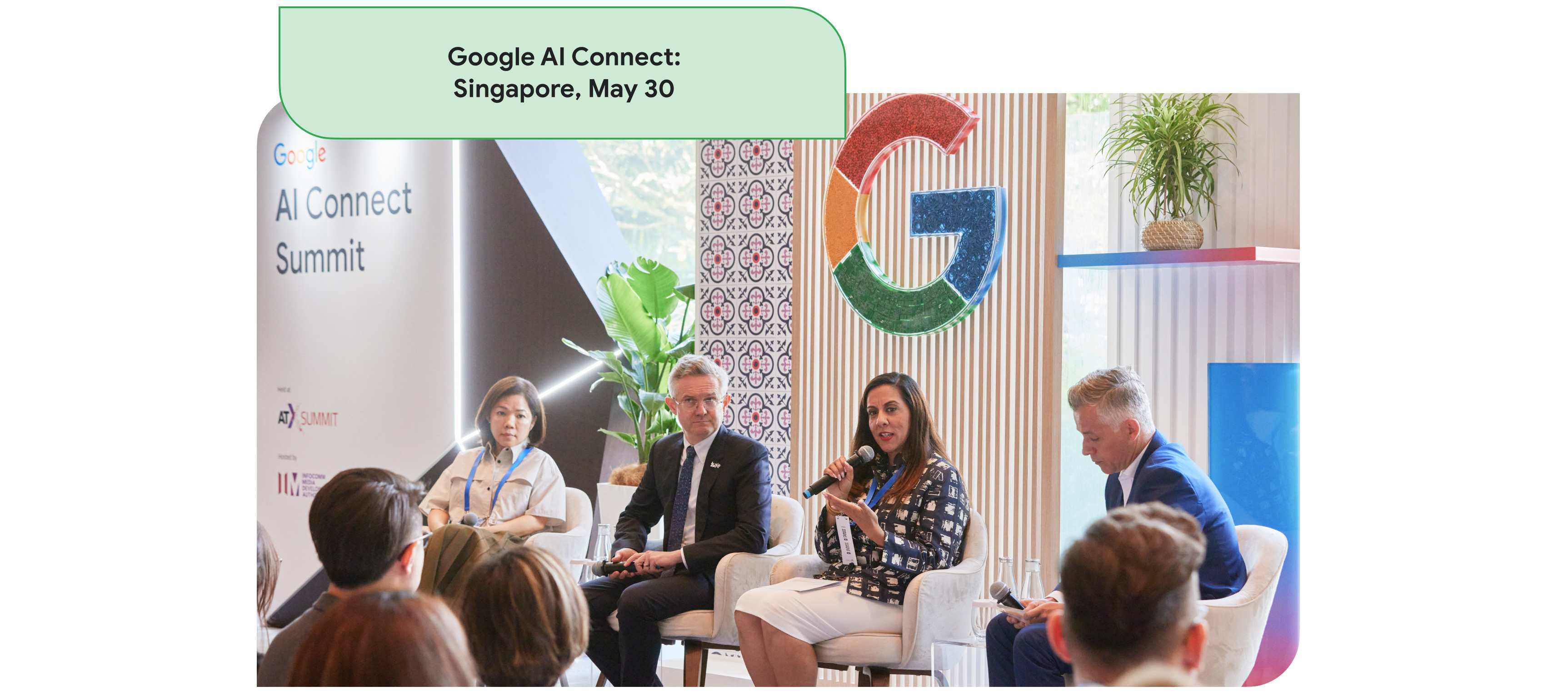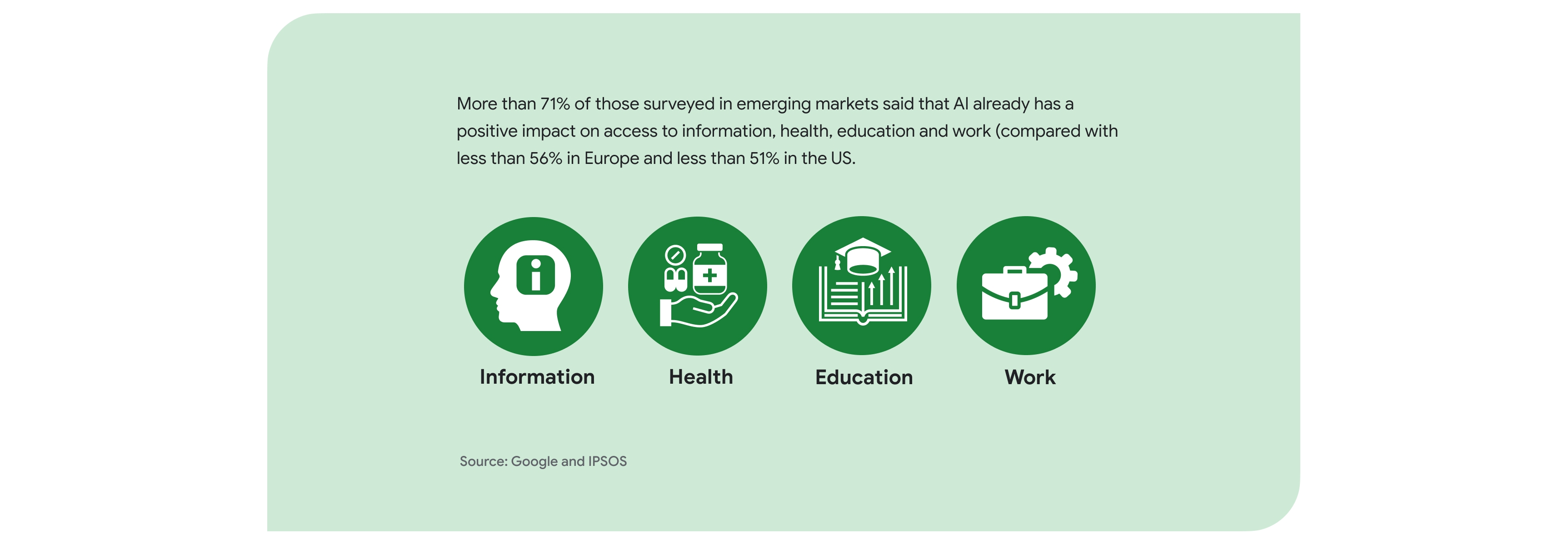Artificial Intelligence: An Innovation and Governance Balancing Act
Technology leaders gathered in Singapore to discuss how Southeast Asian countries can leverage the transformative potential of AI while mitigating the risks.
AI promises to add trillions of dollars in value to the global economy through greater productivity and innovation across nearly every sector, but potential risks must be addressed.
Nowhere is the AI opportunity more keenly anticipated than in Southeast Asia, one of the world’s fastest growing regions, with a young and tech-savvy population. According to new research by Access Partnership, AI, when fully deployed, could help businesses to improve their productivity and bring the region an estimated S$1.1 trillion ($835 billion) in economic benefits in 2030.
Ensuring that every country can benefit from the immense potential of AI in the future will depend on close collaboration between policymakers and the private sector, particularly when it comes to governance and building trust.
The issue of AI governance and how to build an effective framework that catalyzes innovation while mitigating the risks, was top of mind at the recent Google AI Connect event in Singapore on May 30, which brought together a range of stakeholders from policymakers to business leaders.
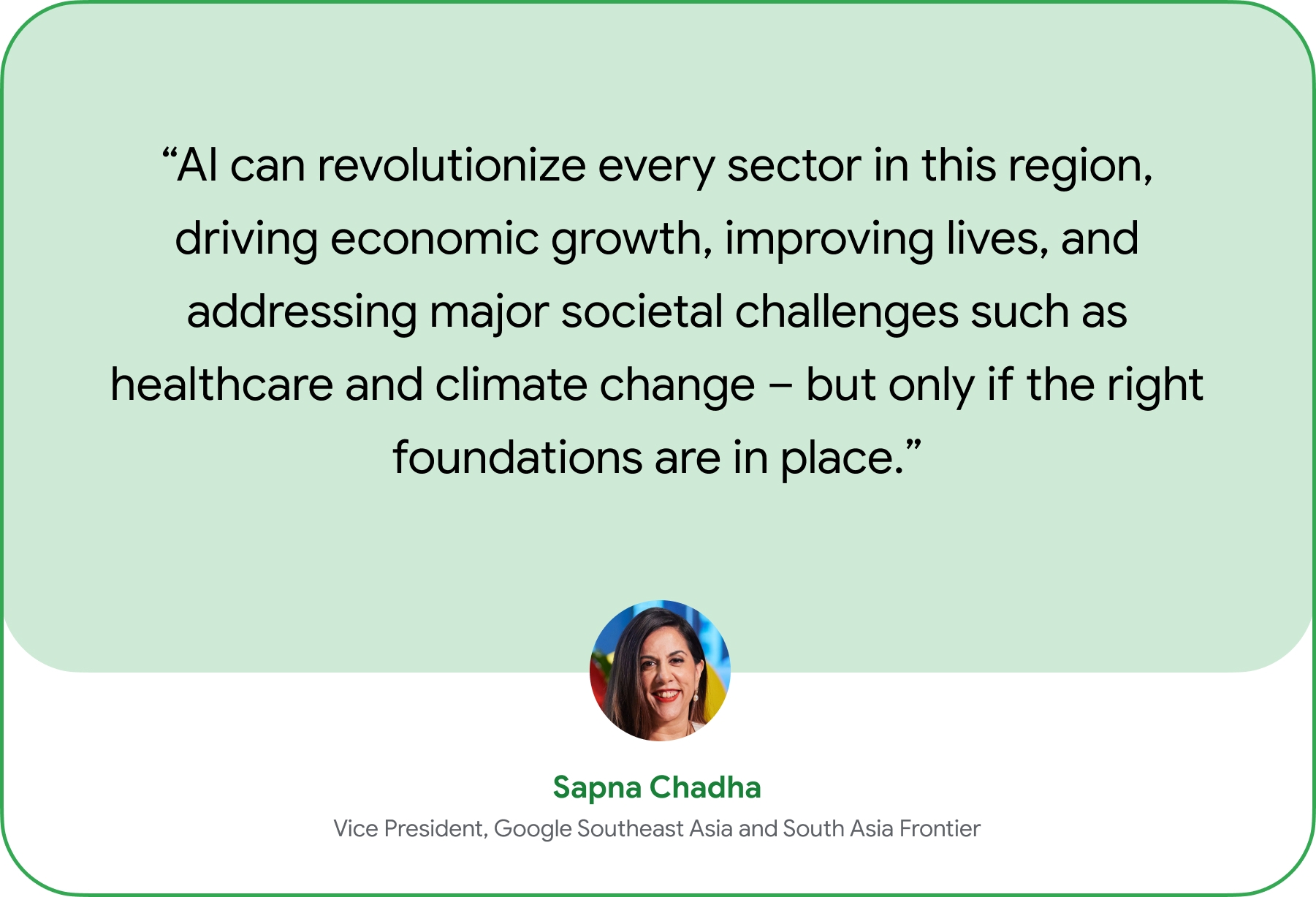
Despite the undeniable complexities of AI, Chadha sees strong partnerships emerging between governments and researchers.
“By fostering open dialogue with Southeast Asian countries and investing in safe spaces to test region-specific solutions, we can unlock the vast potential of AI for all,” she said.

With AI’s opportunities come potential challenges.
In its 2024 Global Risks Report,1 The World Economic Forum highlights three main risks associated with the proliferation and potential misuse of AI.
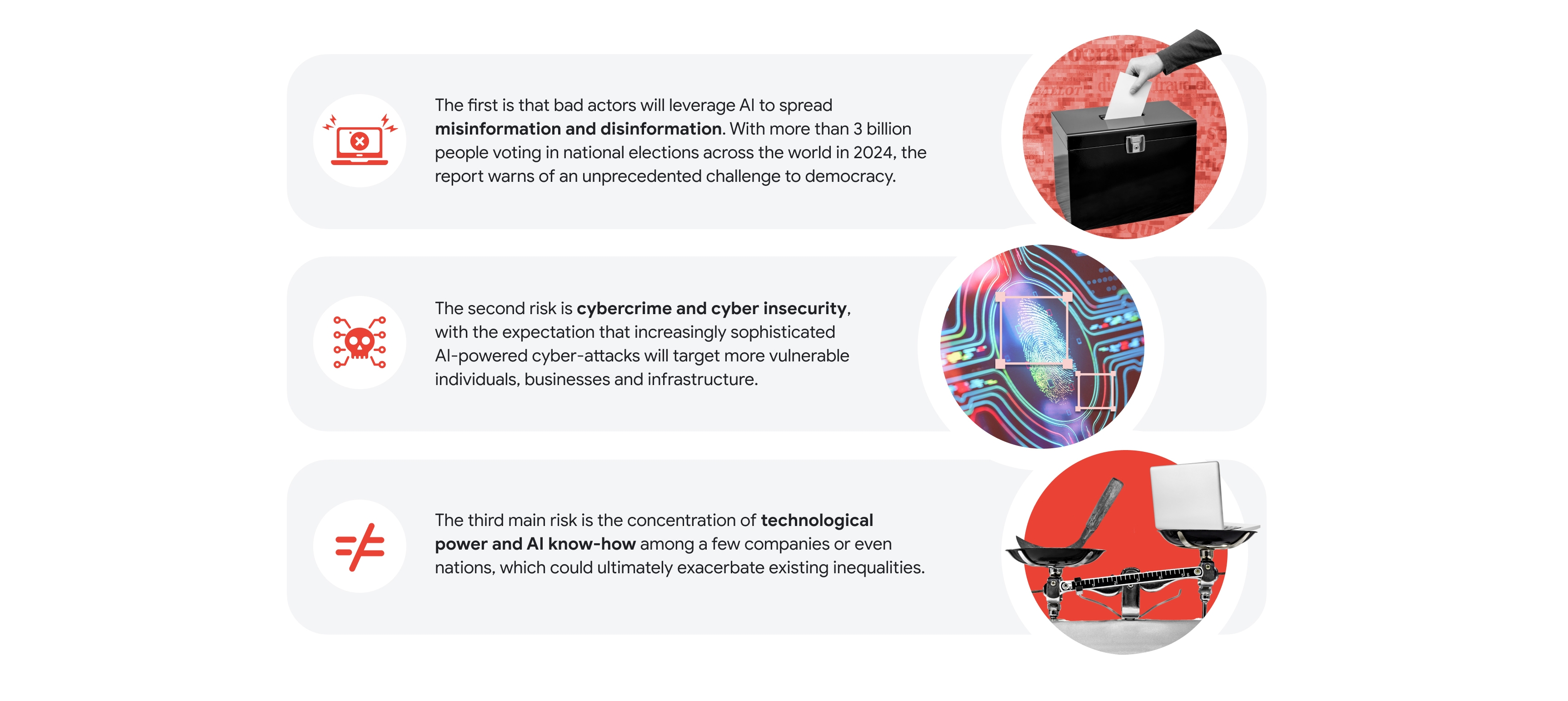
Governments across Southeast Asia are looking at how to establish baseline governance frameworks to manage the potential risks, while maximizing the potential benefits.

ASEAN recently published a framework for AI governance and ethics,2 which recommends best practices for the implementation of trustworthy and safe AI.

The framework is voluntary, with organizations encouraged to use the guidance to assess the risks and take measures to design, develop, and deploy AI responsibly. At its heart, the ASEAN approach recognizes that a balanced, pro-innovation framework is the optimal way forward for Southeast Asia to fully realize the AI opportunity.

“Even as the finishing touches were being put on the EU’s AI Act, ASEAN was working on its own guide on AI governance and ethics that is much less prescriptive and more focused on helping organizations across the region design, develop, and deploy AI systems in line with existing laws and broad principles of governance,” he added.

As a leading voice in the development of AI, Google recently published its own guidance to help ASEAN governments tap into AI’s vast potential. The guidance, An AI Opportunity Agenda for ASEAN,3 highlights three priorities:
1. Infrastructure: Investing in infrastructure that will help power AI to provide a platform for entrepreneurs and scientists. This includes “hard infrastructure” such as technology that supports research and development, as well as “soft infrastructure” such as enabling policies. This investment is underpinned by public-private initiatives across the region.
For example, in November 2023, Google announced partnerships with the Malaysian and Thai governments to help businesses of all sizes increase their digital competitiveness through workforce skills programs. The collaborations include support in key areas such as cloud computing, an essential gateway through which businesses and governments can harness the power of AI.
2. AI-Ready Workforce: Industry, civil society, and policymakers working together to create AI training and support programs. This can be achieved through public-private partnerships that scale these programs and make them accessible across industries.
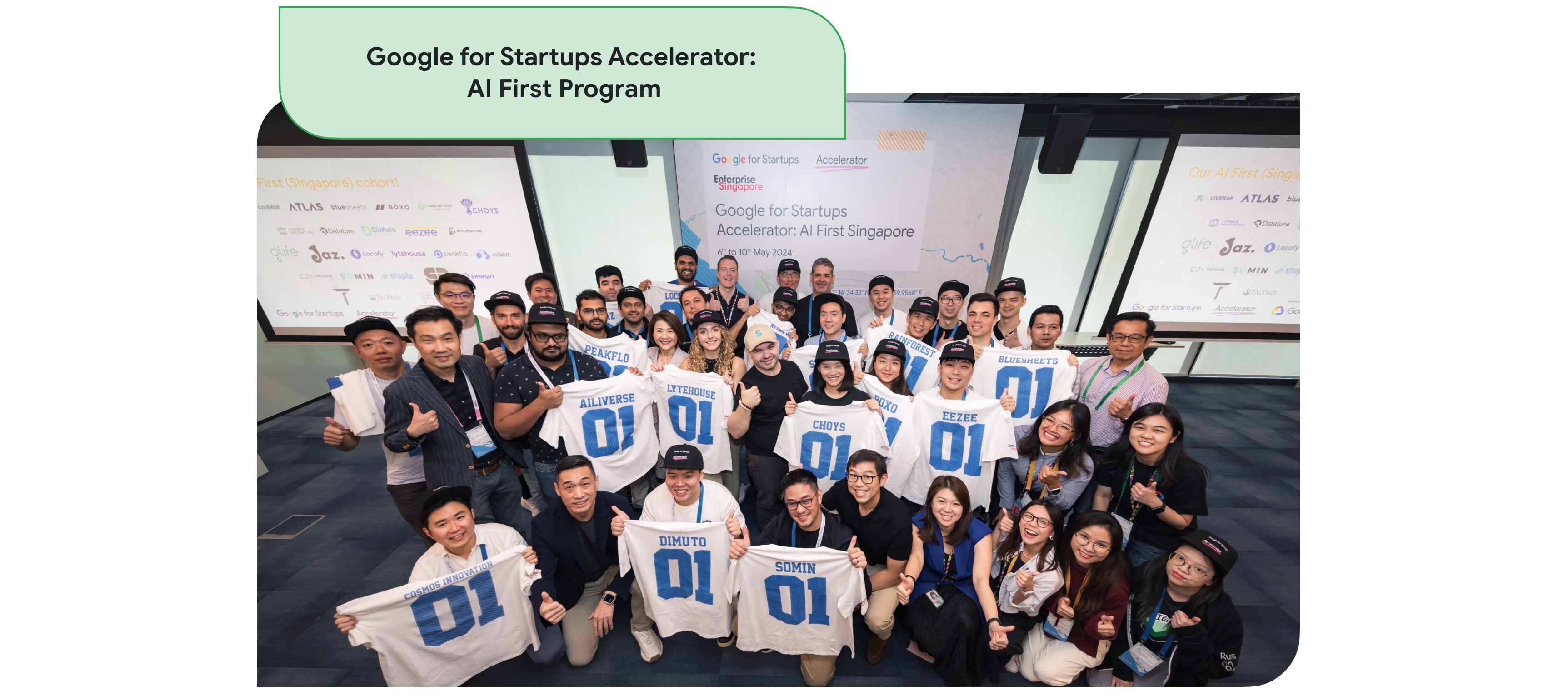
For instance, Google has partnered with Enterprise Singapore to create AI First, an accelerator program for high-potential startups that helps them develop and commercialize AI-driven projects. It has also launched AI Essentials, an online course designed to help people across roles and industries use AI tools to boost their productivity.
AI Trailblazers, another AI initiative that came from a collaboration between Google Cloud and a group of government agencies in Singapore has garnered a positive response.

“The gen AI-powered platform has generated more than SGD$1 million ($737,400) in annual savings by streamlining our hiring process and empowering employees with personalized learning paths. This has increased productivity by 50% through improved skills matching and precision development,” Kee added.
3. Inclusive Adoption and Accessibility: Ensuring that no one is left behind when it comes to AI tools and know-how, and that Southeast Asia’s linguistic and cultural diversity is recognized. For example, large language models (LLMs)—the cornerstone of generative AI—can inherit stereotypes and biases from the data they are fed.
With this in mind, AI Singapore and Google created Project SEALD (Southeast Asian Languages in One Network Data), a collaboration to improve the datasets used to train LLMs in languages spoken across Southeast Asia—from Thai to Bahasa Indonesia-–and make them accessible to marginalized communities, such as migrant workers.

As public-private collaborations help unlock the benefits of AI, can the same approach be used to manage the potential risks of AI?
Public sentiment around AI will continue to be hugely influential. A recent Google survey shows that more than half of respondents globally think AI will likely benefit “people like me,” with a similar number expecting it to improve their health and wellbeing in the next five years. This optimism is even more pronounced in emerging markets.
Southeast Asian governments will want to ensure that governance and oversight is calibrated to spur rather than thwart innovation, ensuring that the benefits of AI—from solving public health problems to raising economic competitiveness—are accessible to all.
This endeavor will depend on industry, government and civil society working together to build trust in AI, drive adoption, and ensure that technological know-how is spread equitably across the region.
